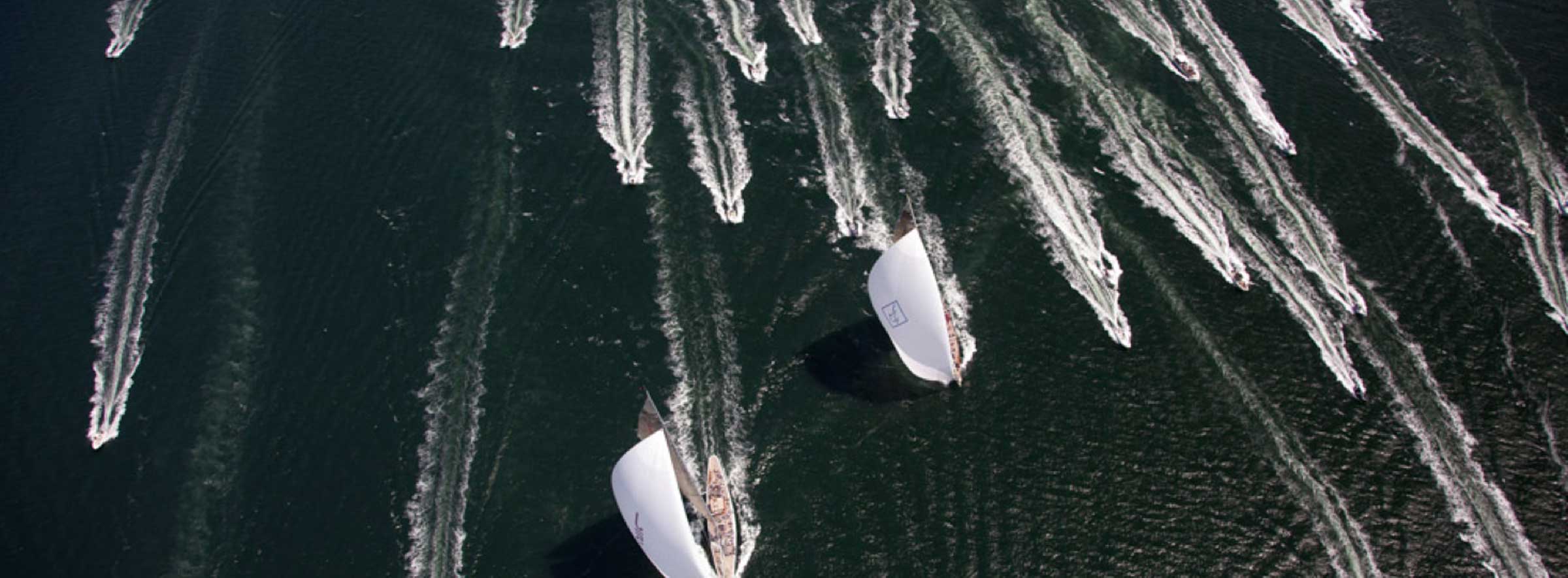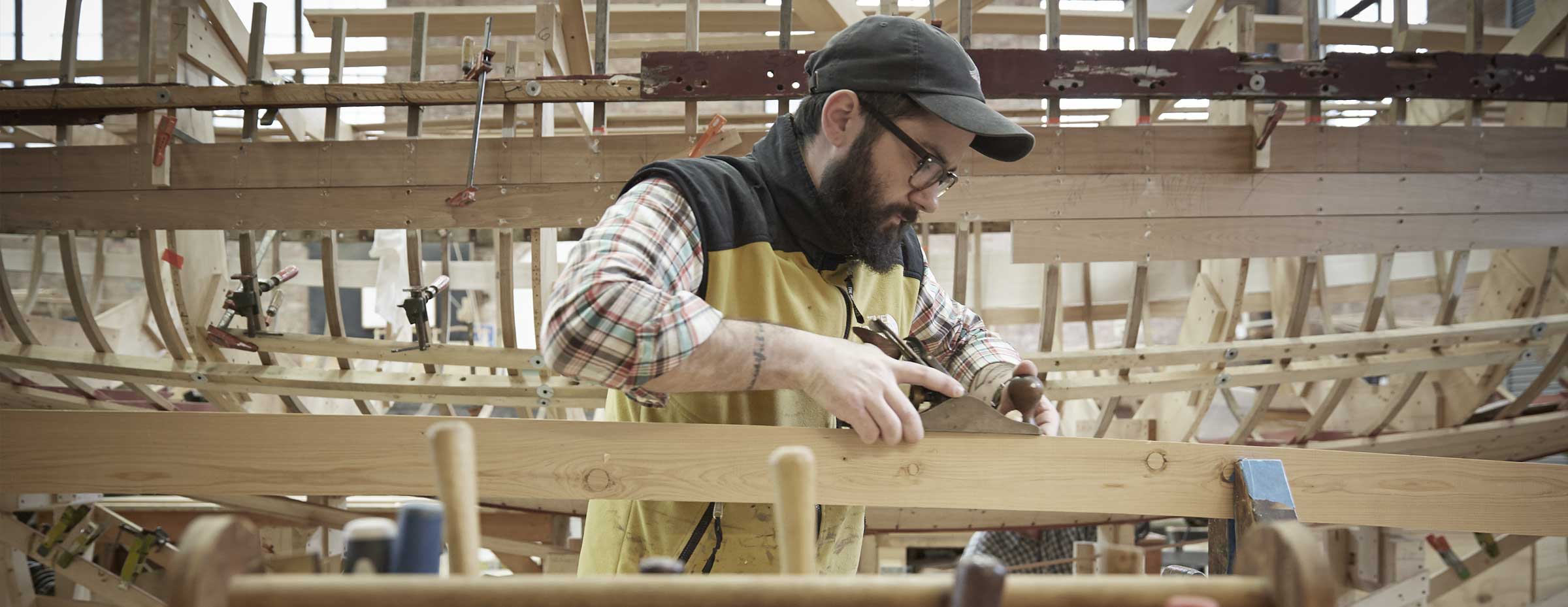INITIATIVES
These studies are a critical piece of the organization’s advocacy work. RIMTA’s Legislative Committee and the lobbying firm it works with use this data to educate lawmakers about the R.I. marine industry and its impact on the state economy.
Results of RIMTA’s most recent economic-impact study, conducted with members of the University of Rhode Island faculty, were released in fall 2018. This study estimates jobs, gross sales, and economic impacts of the R.I. marine trades. The study also breaks down this R.I. industry into subsectors, so we know how heavily we are weighted in different areas of the marine trades.
By the numbers, the Rhode Island marine industry is comprised of 1,712 firms that generate $2.649 billion in annual gross sales and employ 13,337 people. Put into context, our statewide marine-trades sector makes up about 4.7% of the firms in the Rhode Island economy.
RIMTA worked with members of the University of Rhode Island faculty to produce an Economic Impact Study on Rhode Island’s marine-trades sector. The results of the study were released in fall 2018. Learn more in the FAQs below and find a link to a report on the study.
WHAT MAKES THIS STUDY SIGNIFICANT?
A major part of what RIMTA does for its members and the state’s marine trades is advocate for our business sector. No sales tax on boats in Rhode Island is a signature legislative achievement that RIMTA worked toward over 20 years ago, but keeping policymakers informed about the marine trades is an ongoing effort. RIMTA’s Legislative Committee, and the lobbying firm it works with, monitors pending legislation and educates lawmakers about our industry so favorable legislation stays in place.
This study estimates jobs, gross sales, and economic impacts of the R.I. marine trades — making the resultant data a critical building block of our advocacy work. The study also breaks down our R.I. industry into subsectors, so we know how heavily we are weighted in different areas of the marine trades.
HOW DO YOU DEFINE THE R.I. MARINE TRADES? HOW LARGE IS THE SECTOR IN THE STATE?
By the numbers, the Rhode Island marine industry is comprised of 1,712 firms that generate $2.649 billion in annual gross sales and employ 13,337 people. Put into context, our statewide marine-trades sector makes up about 4.7% of the firms in the Rhode Island economy to demonstrate how significant a part of our state’s economy our industry is. This sector includes firms in the areas of boat building and repair, retail boat and equipment sales, marinas, marine construction, manufacturing and supply, diving and salvage, charter and cruise services, and even professional service firms.
WHICH BUSINESS CATEGORY MAKES UP THE LARGEST SUBSECTOR?
Marine Services & Supply is the largest subsector, with 431 firms generating $583.6 million in gross sales annually and 2,757 jobs. The second largest is Marinas, Docks & Yacht Clubs, comprised of 269 firms and generating 2,743 jobs and annual gross sales of $367.43 million. Third is Charter and Cruise Services, with 306 firms generating $336.24 million per year and 1,965 jobs. This report on the study has a complete breakdown on all subsectors in the R.I. marine trades, with information on the number of firms in each subsector, number of jobs, and other data.
WHAT ARE SOME OF THE KEY DATA POINTS?
The Rhode Island marine industry is comprised of 1,712 firms that generate $2.649 billion in annual gross sales and employ 13,337 people. The statewide marine-trades sector makes up about 4.7% of the firms in the Rhode Island economy.
The firms in our sector are generally smaller than the average in the economy as a whole, but these marine businesses operate with larger labor income per firm. This is based on a combination of higher wages and higher profitability, on average, in the marine trades despite fewer employees per firm. Since the marine trades compete for skilled talent with so many other business sectors in our country’s current low-unemployment situation, this is an important data point.
WHO DID RIMTA PARTNER WITH TO CONDUCT THIS STUDY?
To conduct this study, RIMTA partnered with University of Rhode Island Associate Professor Dr. Thomas Sproul and PhD Student Clayton Michaud. RIMTA’s working relationship with the University of Rhode Island continues to prove invaluable in our efforts to promote and strengthen the R.I. marine trades. The economic impact study was made possible with support from a U.S. Economic Development Administration Planning Grant.
NMMA continuously monitors legislation and regulatory issues in all 50 states, pursuing the marine industry’s objectives and defending it against potentially harmful government initiatives. State governments frequently introduce and enact laws within months and the fast pace means state-level issues require quick action. NMMA has developed infographics to illustrate the economic impact of recreational boating for the U.S.in each state to educate the public and key decision-makers on regulatory issues.
> View the NMMA Rhode Island Marine Economic Impact

ENVIRONMENTAL EFFORTS |
The business of boating depends on a healthy ocean. RIMTA has created programs and partnered with leading environmental organizations to give marine businesses clear guidelines on steps they can take to run a more sustainable operation. |
RIMTA was among the first in the country to begin a collection program to recycle shrink wrap used by marinas and boat yards.
Historically shrink wrap has been sent to landfills once it has been removed from a boat. RIMTA’s partnership with a regional material hauler/recycling firm provides an environmentally viable and economically practical option for the collection, processing and repurposing of the discarded shrink-wrap from our members across Rhode Island.
RIMTA members are able to participate in the program by purchasing ‘shrink wrap bags’ to collect their shrink wrap material. Each bag can hold up to 40 lbs of shrink wrap material and will be picked up from your facility at no additional cost.
Who weighs more? The Statue of Liberty or the total number of shrink wrap
RIMTA is proud to report that over the last 3 years, almost 360,000 pounds (180 tons) of shrink wrap was collected and recycled. The Statue of Liberty weighs in at 140 tons.



